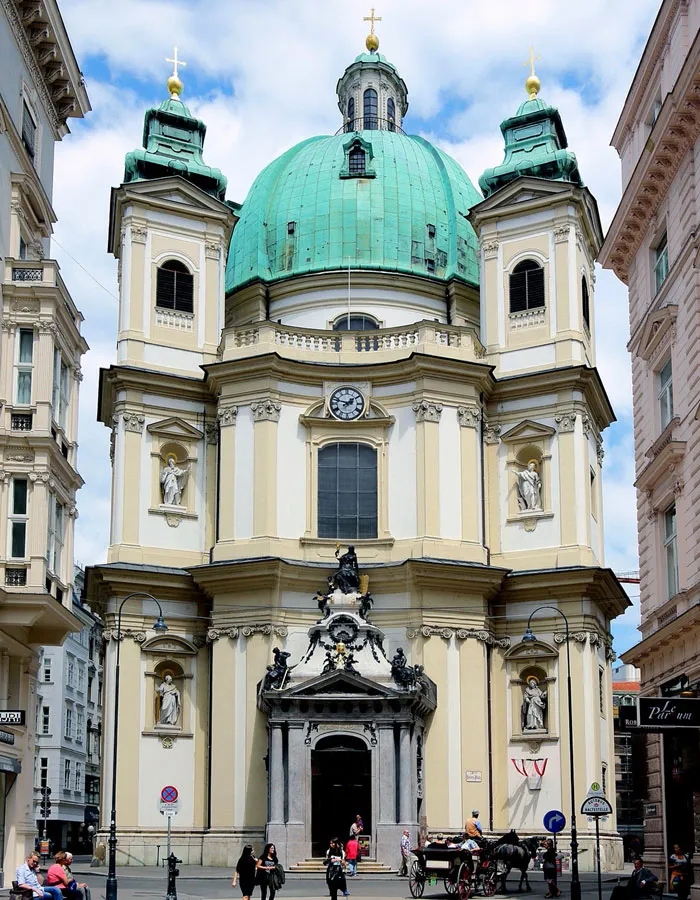
Introduction
St. Peter’s Catholic Church, Vienna / The Peterskirche (English: St. Peter’s Church) is a Baroque Roman Catholic parish church in Vienna, Austria. It was transferred in 1970 by the Archbishop of Vienna Franz Cardinal König to the priests of the Opus Dei.
The “first” St. Peter’s Church was built in the second half of the 4th century, on the site of the current building, as a conversion of a barracks building of the Roman camp Vindobona: It was a basilica-style single-aisled hall church, the oldest church in Vienna and the city’s first parish.
The medieval St. Peter’s Catholic Church, Vienna arose from a Romanesque conversion of this church, which was later given a Gothic appearance. Its nave had three unequal naves and contained eight altars, its rectangular tower was three stories high, ending in high corner towers at the four edges and surmounted by a pointed spire in the middle (see Hoefnagel’s view, 1609, reproduced here). What the inside of this church looked like in detail is not yet known. Stone reredos from the late Gothic St. Valentine’s Chapel from 1510/15 have been preserved in the crypt.
St. Peter’s Catholic Church, Vienna has been restored several times, most recently fundamentally inside and outside from 2001 to 2004 (see renovation). Underneath the entire church is the crypt, where the oldest part of the church can be found, a pre-Romanesque stone portal lion. This room was restored in 1971, refurbished and made available for pastoral care. A nativity scene exhibition, which has become very popular, has taken place here every year since 1958 during Advent.
The pastoral care of St. Peter’s Church was entrusted to the priests of Opus Dei by the Archbishop of Vienna in 1970. In 1976 the parish was converted into a rectorate church.
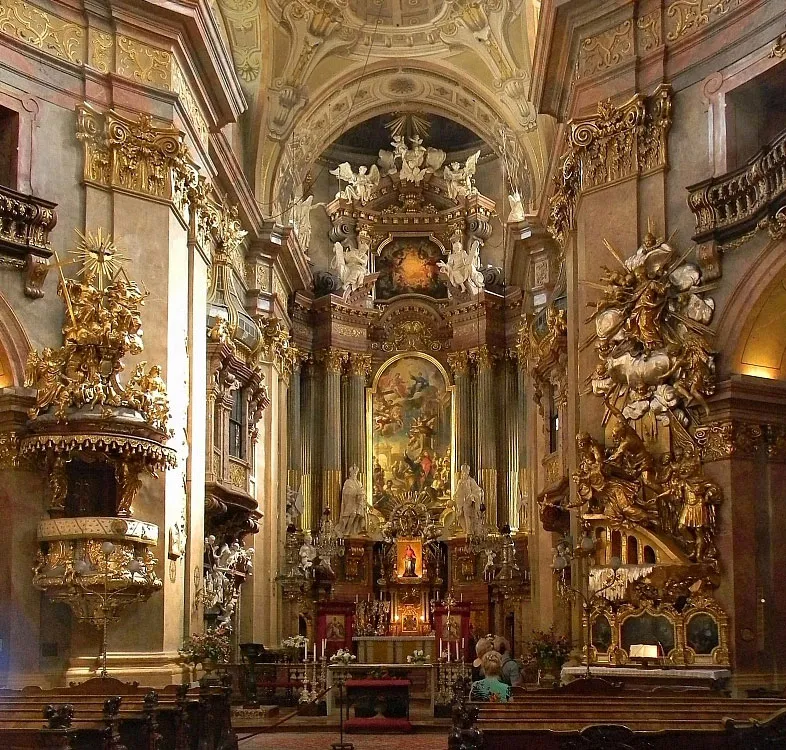
The First Church
St. Peter’s Catholic Church, Vienna – The oldest church building (of which nothing remains today) dates back to the Early Middle Ages, and there is speculation that it could be the oldest church in Vienna (see Ruprechtskirche). That Roman church was built on the site of a Roman encampment.
This church was replaced with a Romanesque church with a nave and two aisles. It is believed to have been established by Charlemagne around 800, although there is no evidence supporting this view. At the outside of the church, there is a relief sculpture by R. Weyr consecrated to the founding of the church by Charlemagne. In any case, a church of Saint Peter in Vienna is first mentioned in 1137. Around the end of the 12th century, the church became part of the Schottenstift.
The mediaeval church had three altars, with an apse in the south instead of the normal eastern orientation. This unusual feature has triggered many discussions among experts, and it is suspected that the church was adapted from a previously secular building. The church was surrounded by shops, and a nearby building housed the Stadtguardia, a forerunner of the modern police.
The old church burned down in 1661 and was given only makeshift repairs. The decision to build a new church was taken up with the arrival of the Fraternity of the Holy Trinity of which the emperor Leopold I was a member. He had taken a vow to rebuild this church when Vienna was ravaged by the plague in 1679–1680.

The New Building
St. Peter’s Catholic Church, Vienna – The construction of the new Baroque church was begun around 1701 under Gabriele Montani, who was replaced by Johann Lukas von Hildebrandt in 1703. The design was inspired by the St. Peter’s Basilica of the Vatican in Rome. Francesco Martinelli was the main architect. By 1722, most of the building was finished, and in 1733 the Peterskirche was finally consecrated to the Holy Trinity.
The new church (St. Peter’s Catholic Church, Vienna) was the first domed structure in baroque Vienna. Due to the confinement of available space, it was built in a compact form, with its oval interior housing an astonishing amount of space and rectangular attachments. The church’s interior has a lot of gold stucco.
The turreted dome was mainly designed by Matthias Steinl, who was also responsible for the interior decoration and the pews with cherubic heads. The frescoes were originally painted by the Italian Andrea Pozzo, whose paintings were removed after his death.[clarification needed] As a result, in 1713, Johann Michael Rottmayr was able to start a completely new set. The fresco in the cupola represents the Coronation of Our Lady.
On the triumphal arch one can see the coat of arms of emperor Leopold I. In the spandrels around the dome are portrayals of the four Evangelists and four Fathers of the Church, painted by the Viennese artist J.G. Schmidt. The same artist also painted the altarpiece in the side chapel of St. Michael.
The Baroque high altar was created by Antonio Galli Bibiena and his Bolognese workshop (construction) and Martino Altomonte (1657–1745) (altarpiece). The altarpiece portrays the Healing of the Lame by St. Peter and St. John in Jerusalem. The same artist also painted the altarpiece in the side chapel of the Holy Family.
The small painting of the Immaculate Conception above the high altar is by the 19th century artist Kupelwieser. The shrines in the side chapels of the Holy Family and St. Michael contain martyrs from Roman catacombs, donated by Cardinal Kollonitz in 1733. They were clothed in this period and placed in the glass coffins.
The gilded pulpit is a by Matthias Steinl (1726) with on top of the canopy a representation of the Holy Trinity. Opposite the pulpit there is a gold-and-silver representation of the Martyrdom of St. John of Nepomuk, sculpted by Lorenzo Mattielli. On top of it is a statue of The Mother of God.
Over the years, the paintings had become darker, and the interior began to take on a grey appearance. From 1998 to 2004, the church underwent a renovation, which returned the paintings to their original colouring and brightness.
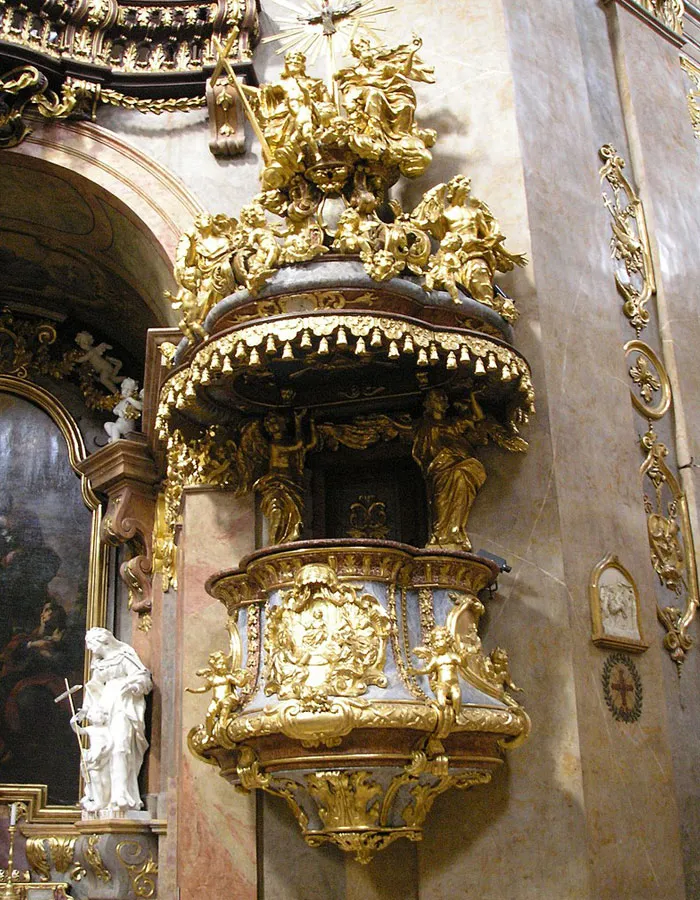
Architecture of St. Peter's Catholic Church, Vienna
- Architectural Style : Baroque Architecture
- Architects : Johann Lukas von Hildebrandt, Kilian Ignaz Dientzenhofer
St. Peter’s Catholic Church, Vienna – The church building rises on the ground plan of an ellipse, above it the central dome, which ends with a lantern (height 56.8 m). The front, slightly concave, is flanked by two high towers and ends at mid-height in a balustrade. In the towers are the statues (made of sandstone) of the apostles Paul and Simon, on the left and Johannes Ev. and Judas Thaddeus, right. On the back is a square with a transverse, oval dome. The sanctuary is located there, with the sacristy to the left and the exit to the crypt to the right.
Access
The Peterskirche is located on Petersplatz, right next to Graben and just west of the Pestsäule. The street Jungferngasse cuts through the pedestrian zone and leads directly to the church. The Peterskirche is largely obscured by the surrounding buildings, and can only be seen clearly from directly in front.
Immaculate Heart of Mary
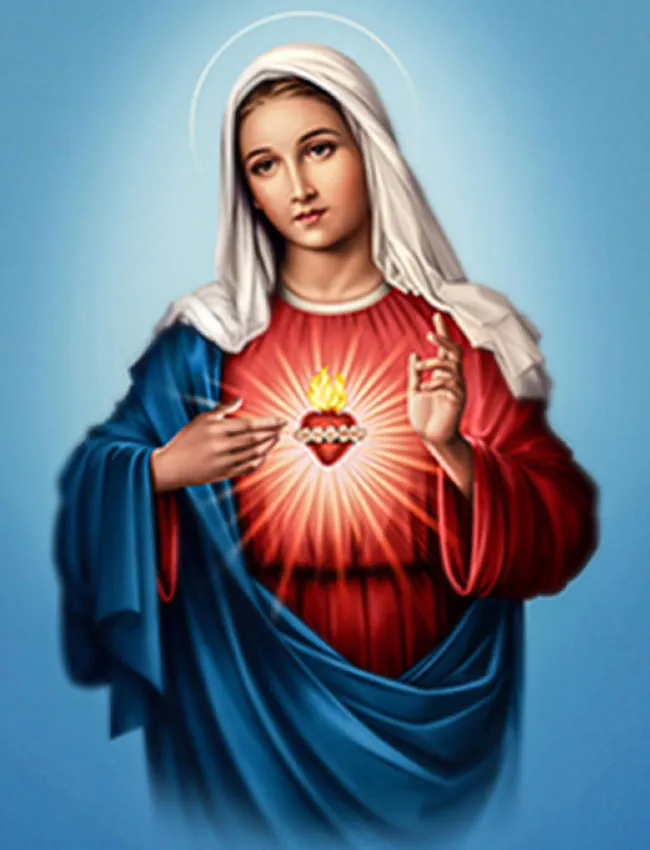
The Immaculate Heart of Mary (Latin: Cor Immaculatum Mariae) is a Roman Catholic devotional name used to refer to the Catholic view of the interior life of Mary, mother of Jesus, her joys and sorrows, her virtues and hidden perfections, and, above all, her virginal love for God the Father, her maternal love for her son Jesus Christ, and her motherly and compassionate love for all mankind.
Traditionally, the Immaculate Heart is depicted pierced with seven swords or wounds, in homage to the seven dolors of Mary and roses, usually red or white, wrapped around the heart.
The Eastern Catholic Churches occasionally utilize the image, devotion, and theology associated with the Immaculate Heart of Mary. However, this is a cause of some controversy, some seeing it as a form of liturgical latinisation. The Roman Catholic view is based on scripture, particularly the Gospel of Luke.
History of Immaculate Heart of Mary
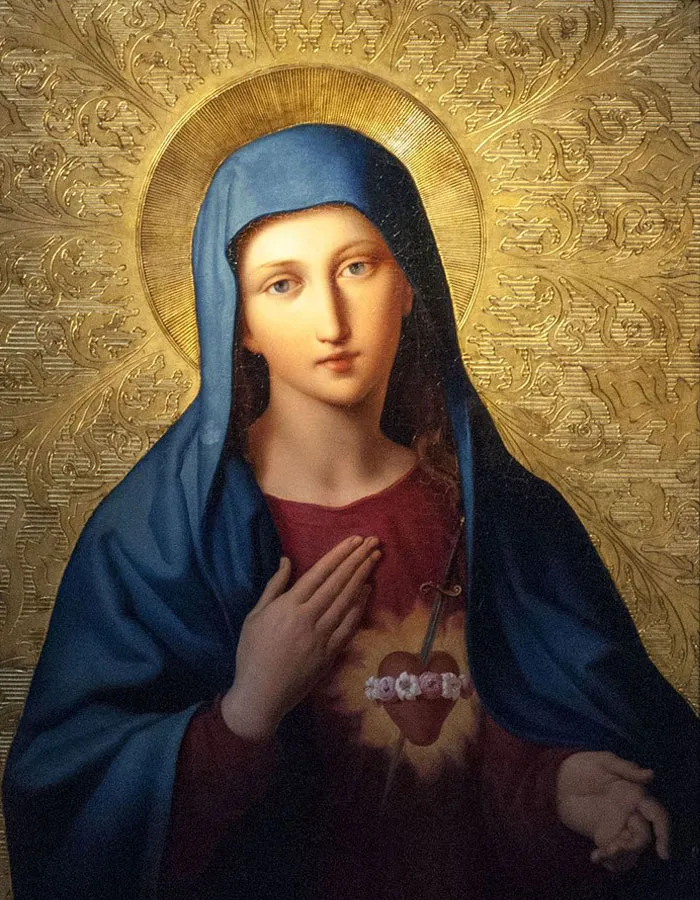
Historically, devotion to the Heart of Mary grew up in parallel, but at a lesser intensity than that of devotion to the Heart of Jesus, only starting to become more prominent during the time of St John Eudes. John Eudes was born in 1601 in Normandy, France. He entered the Congregation of the Oratory of France, founded in 1611 by Cardinal de Berulle and was ordained to the priesthood on December 20, 1625.
St. John brought people to love Christ and the Virgin Mary by speaking tirelessly about their Heart, the sign of the love God shows for us and the communion to which we are called.
To offer them liturgical worship, he composed Masses and Offices in their honor and had the first Feast of the Holy Heart of Mary celebrated on February 8, 1648, at Autun (France,) and the Feast of the Heart of Jesus celebrated on October 20, 1672.
He died on August 19, 1680 and was canonized by Pope Pius XI on May 31, 1925.
Nevertheless, it was not until after the Apparitions at Rue du Bac concerning the “Miraculous Medal” made to Catherine Labouré in 1830, and the establishment of a society dedicated to the Immaculate Heart of Mary, at the Church of Our Lady of Victories in Paris in 1836, that this particular devotion became really well known.
Since then devotion to the Immaculate Heart of Mary, has gradually grown more widespread in the Church, particularly since the apparitions at Fatima.
The main difference between the devotions to the hearts of Jesus and Mary is that the one concerned with Jesus emphasizes his divine heart as being full of love for mankind, but with this love for the most part being ignored or rejected, while devotion to Mary’s heart is essentially concerned with the love that her heart has for Jesus, for God.
Therefore, it is not an end in itself, so the love of her heart is meant to be a model for the way we should love God. The fact that her heart is immaculate, that is sinless, means that she is the only fully human person who is able to really love God in the way that he should be loved.
Honoring Mary’s Immaculate Heart is really just another way of honoring Mary as the person who was chosen to be the Mother of God, recognizing her extraordinary holiness and the immense love she bestowed on Jesus as his mother, the person who was called to share in and co-operate in his redemptive sufferings.
The aim of the devotion is to unite mankind to God through Mary’s heart, and this process involves the ideas of consecration and reparation. A person is consecrated to Mary’s Immaculate Heart as a way of being completely devoted to God. This involves a total gift of self, something only ultimately possible with reference to God; but Mary is our intermediary in this process of consecration.
Because of the strong analogy between Jesus and Mary, the consecration to Mary’s Immaculate Heart is closely linked to the consecration to Jesus’ Sacred Heart, although it is subordinate and dependent on it. That is, although the act of consecration is ultimately addressed to God, it is an act that is made through Mary.

Veneration
St. Peter’s Catholic Church, Vienna – The veneration of the Heart of Mary is analogous to the veneration of the Sacred Heart of Jesus. There are, however, differences in this analogy as devotion to the heart of Jesus is especially directed to the “divine heart” as overflowing with love for humanity. In the devotion to Mary, however, the attraction is the love of her heart for Jesus and for God.
The second difference is the nature of the devotion itself: in the devotion to the Sacred Heart of Jesus, the Roman Catholic venerates in a sense of love responding to love, in the devotion to the Heart of Mary, study and imitation hold as important a place as love. The aim of the devotion is to unite humankind to God through Mary’s heart, and this process involves the ideas of consecration and reparation.
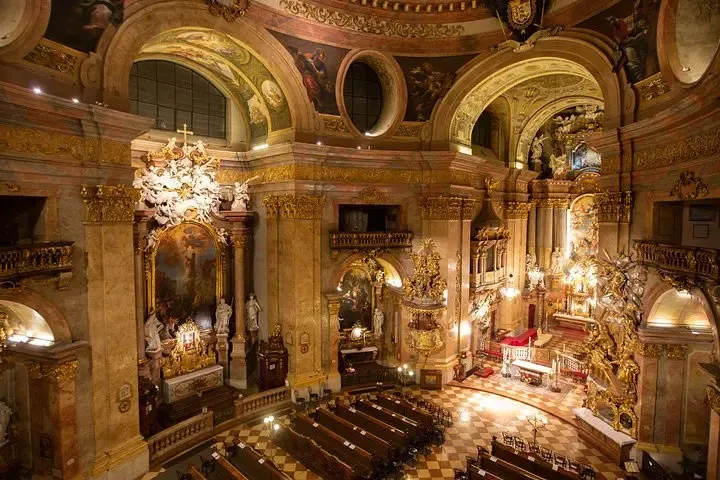
Scriptural Basis
In Chapter 2 of Luke’s gospel, the evangelist twice reports that Mary kept all things in her heart, that there she might ponder over them. Luke 2:35 recounts the prophecy of Simeon that her heart would be pierced with a sword. This image (the pierced heart) is the most popular representation of the Immaculate Heart.
John’s Gospel further invited attention to Mary’s heart with its depiction of Mary at the foot of the cross at Jesus’ crucifixion. Augustine of Hippo said of this that Mary was not merely passive at the foot of the cross; “she cooperated through charity in the work of our redemption”. Augustine says that she was more blessed in having borne Christ in her heart than in having conceived him in the flesh.
Various Saints
Devotion to the Heart of Mary began in the Middle Ages with Anselm of Canterbury, and Bernard of Clairvaux. It was practiced and developed by Mechtilde, Gertrude the Great and Bridget of Sweden. Evidence is also discernible in the pious meditations on the Ave Maria and the Salve Regina, usually attributed either to Anselm of Lucca (d. 1080) or Bernard; and also in the large book “De laudibus Beatae Mariae Virginis” (Douai, 1625) by Richard de Saint-Laurent, Penitentiary of Rouen in the thirteenth century.
Bernardino of Siena (d.1444), is sometimes called “Doctor of the Heart of Mary”, and from him the church has borrowed the lessons of the second nocturn for the feast of the Heart of Mary. Francis de Sales speaks of the perfections of this heart, the model of love for God, and dedicated his “Theotimus” to it.
During this same period one finds occasional mention of devotional practices to the Heart of Mary, e.g., in the “Antidotarium” of Nicolas du Saussay (d. 1488), in Pope Julius II, and in the “Pharetra” of Lanspergius. In the second half of the sixteenth century and the first half of the seventeenth, ascetic authors dwelt upon this devotion at greater length.
It was, however, John Eudes (d. 1681) who propagated the devotion, to make it public, and to have a feast celebrated in honor of the Heart of Mary, first at Autun in 1648 and afterwards in a number of French dioceses. He established several religious societies interested in upholding and promoting the devotion, of which his large book on the Coeur Admirable (Admirable Heart), published in 1681, resembles a summary.
Jean Eudes’ efforts to secure the approval of an office and feast failed at Rome, but, notwithstanding this disappointment, the devotion to the Heart of Mary progressed. Eudes began his devotional teachings with the Heart of Mary, and then extended it to the Sacred Heart of Jesus. However, it was only in 1805 that Pope Pius VII allowed a feast to honor the Immaculate Heart of Mary.
In 1699 the priest John Peter Pinamonti (d. 1703) published a short work on the Holy Heart of Mary in Italian, and in 1725, Joseph de Gallifet combined the cause of the Heart of Mary with that of the Heart of Jesus in order to obtain Rome’s approbation of the two devotions and the institution of the two feasts. In 1729, his project was defeated, and in 1765, the two causes were separated, to assure the success of the principal one.
Two factors that helped the rapid progress of the devotion were the introduction of the Miraculous Medal by Catherine Laboure in 1830 and the establishment at Notre-Dame-des-Victoires, Paris of the Archconfraternity of the Immaculate Heart of Mary, Refuge of Sinners.
More than four million Miraculous Medals were distributed throughout the world within four years and in 1838 Desgenettes, the pastor of Notre-Dame-des-Victoires, organized the Association in honor of the Holy and Immaculate Heart of Mary, which Pope Gregory XVI made a confraternity the same year. In July, 1855, the Congregation of Rites approved the Office and Mass for the Immaculate Heart.
In 1849 Anthony Mary Claret founded the congregation of Missionary Sons of the Immaculate Heart of Mary, commonly called the Claretians.
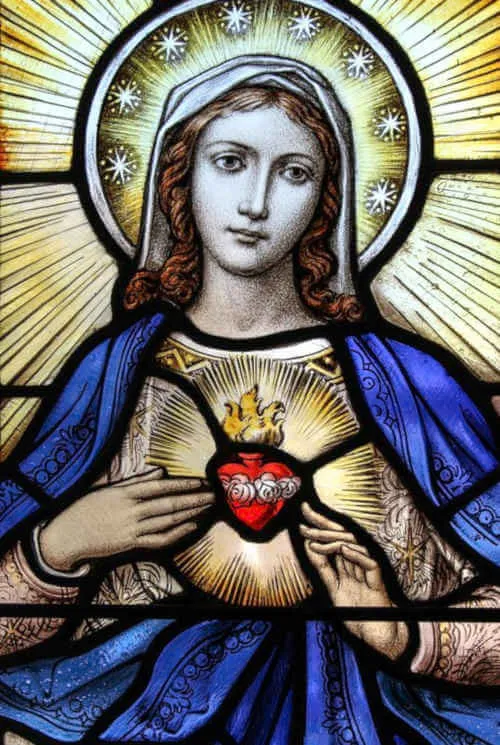
Consecration of the World to the Immaculate Heart of Mary
During the third apparition at Fátima, Portugal, on 13 July 1917, the Virgin Mary reportedly said to the three little shepherd visionaries: God wishes to establish the devotion to her Immaculate Heart in the world in order to save souls from hell and bring about world peace, and also asked for the consecration of Russia to her Immaculate Heart.
From the beginning of the twentieth century the Holy See received many requests that the world be consecrated to the Immaculate Heart of Mary. In June 1938, the Portuguese bishops forwarded a request to Pius XI for the consecration of the world to the Immaculate Heart of Mary. They had themselves consecrated Portugal in May 1931. At that time Cardinal Eugenio Pacelli (later Pope Pius XII) was the secretary of the state of the Vatican, and later he performed the consecration of the world.
- On October 31, 1942, Pius XII broadcast a radio address entitled Benedicite Deum to thousands of pilgrims who had come to Fatima to celebrate the Silver Jubilee of the last apparition of Our Lady. He concluded his address by consecrating the whole world to the Immaculate Heart of Mary,
Finally, just as the Church and the entire human race were consecrated to the Heart of your Jesus, …so, in like manner, they are henceforth perpetually consecrated to you, to your Immaculate Heart, Oh our Mother, and Queen of the world: in order that your love and protection may hasten the triumph of the kingdom of God.
- Pius renewed the consecration again on December 8, 1942 at St. Peter’s Basilica.
- Pope Paul VI renewed this consecration on Nov. 21, 1964.
- On May 13, 1982 in Fatima, after concelebrating Mass, Pope John Paul II consecrated the whole world and peoples to the Immaculate Heart of Mary, “In a special way we entrust and consecrate to you those individuals and nations which particularly need to be entrusted and consecrated…The power of this consecration lasts for all time and embraces all individuals, peoples and nations.”
- On December 8, 1982, the Solemnity of the Immaculate Conception, at the end of the Mass he celebrated in the Basilica of St. Mary Major, he renewed the act of consecration of the Church and the world to Mary before the image of Our Lady “Salus Populi Romani ‘.
- On October 8, 2000, John Paul II made an act of entrustment of the world to the Immaculate Heart of Mary for the new millennium.
- Pope Francis renewed the consecration of the world to the Immaculate Heart of Mary on 13 October 2013 in Rome, as part of the Marian Day celebration that involved the iconic statue of Our Lady of the Rosary of Fátima.
The Rococo Portal
St. Peter’s Catholic Church, Vienna – The rococo portal was designed by Andrea Altomonte and executed by a donation from the Superintendent of the Brotherhood of Trinity, Joachim Georg Schwandtner (tomb in the church, left in the presbytery). On the roof, the three theological virtues of faith, hope and love are represented as lead statues (by Franz Kohl, inspired by figure inventions by Georg Raphael Donner).
The Organ
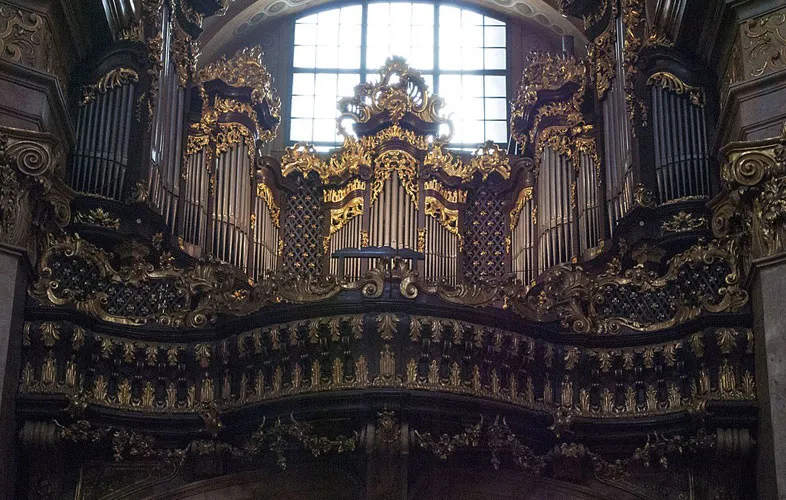
St. Peter’s Catholic Church, Vienna – Balustrade, rococo-style grille and the organ pipes (2175 pipes, 3 manuals, 34 voices) are richly decorated. The overall concept of the organ and the pews comes from Matthias Steinl.
Under the organ gallery there are frescoes by A. Galli-Bibiena from the life of St Peter. Here: Jesus commands Peter to walk on the sea.
The interior of the church is characterized by the oval shape and the high dome. Under the leadership of Matthias Steinl, the participating masters have created a unified total work of art.
Dome Fresco
St. Peter’s Catholic Church, Vienna – Painted almost alone by Johann Michael Rottmayr in two years (1713-14). The main theme is the coronation of Mary by God the Father and God the Son, the Holy Spirit hovers over it in the lantern. All around the apostles, well-known saints and figures from the Old Testament, the three archangels and everywhere many angels.
Feast Day - 17th June
Annual Feast Day of Immaculate Heart of Mary (Our Lady of Immaculate Heart) held on 17th June.
In its principal object this feast is identical with the feast of the “Inner Life of Mary”, celebrated by the Sulpicians on 19 October. It commemorates the joys and sorrows of the Mother of God, her virtues and perfections, her love for God and her Divine Son and her compassionate love for mankind.
As early as 1643, St. John Eudes and his followers observed 8 February as the feast of the Heart of Mary. In 1799 Pius VI, then in captivity in Florence, granted the Bishop of Palermo the feast of the Most Pure Heart of Mary for some of the churches in his diocese. In 1805 Pope Pius VII made a new concession, thanks to which the feast was soon widely observed.
Such was the existing condition when a twofold movement, started in Paris, gave fresh impetus to the devotion; the two factors of this movement were, first of all, the revelation of the “Miraculous Medal” in 1830, and then the establishment at Notre-Dame-des-Victoires of the Archconfraternity of the Immaculate Heart of Mary, Refuge of Sinners, which spread rapidly. On 21 July 1855, the Congregation of Rites finally approved the Office and Mass of the Most Pure Heart of Mary without, however, imposing them upon the Catholic Church.
Pope Pius XII instituted the feast of the Immaculate Heart of Mary in 1944 to be celebrated on 22 August, coinciding with the traditional octave day of the Assumption. In 1969, Pope Paul VI moved the celebration of the Immaculate Heart of Mary to the Saturday, immediately after the Solemnity of the Sacred Heart of Jesus. This means in practice that it is now held on the third Saturday after Pentecost.
At the same time as he closely associated the celebrations of the Immaculate Heart of Mary and the Sacred Heart of Jesus, Pope Paul VI moved the celebration of the Queenship of Mary from 31 May to 22 August, bringing it into association with the feast of her Assumption. Those who use the 1962 edition of the Roman Missal or an earlier one (but not more than 17 years before 1962) observe the day established by Pius XII.
It is kept as the patronal feast of the Congregation of the Holy Ghost, of the Society of the Sacred Hearts of Jesus and Mary, and of the Missionary Society of the Heart of Mary.
The month of August in traditionally dedicated to the Immaculate Heart of Mary.
Mass Time
Weekdays
- 11:00 am
- 12:30 pm
- 5:00 pm
Saturdays
- 11:00 am
- 12:00 (Noon)
- 5:00 pm
Sundays
- 10:00 am
- 11:15 am
- 5:00 pm
Church Visiting Time
- Weekdays : 8:00 am to 7:00 pm
- Saturdays & Sundays : 9:00 am to 7:00 pm
Contact Info
Peter’s Square, 1010 Vienna, Austria
Phone No.
Tel : +43 1 533 64 33
Accomodations
How to reach the Church
Vienna International Airport in Schwechat, Austria is the nearby airport to the Church.
Stephansplatz Subway Station in Vienna, Austria is the nearby Subway Station to the Church.








